 Fly Tying is one of those rare disciplines blending art and science. An endless source of frustration and pleasure, interspersed with fits of genius, artistic tantrum, and drudge.
Fly Tying is one of those rare disciplines blending art and science. An endless source of frustration and pleasure, interspersed with fits of genius, artistic tantrum, and drudge.
There are really only three types of fly tiers; Beginners, Experts, and Opinionated, and like any art form is replete with sub-schools, trends, false prophets, and is always on the brink of total revolution. New materials are always the catalyst for change, with much of the old thrown out and whatever is “new” trumpeted as the one true path.
Somewhere in all of this is the aspiring tier, surrounded by Bibles, dusty tomes, and countless magazines, usually without the materials cited by the prestigious authors, and hanging somewhere near financial insolvency, trying to keep pace.
You’ve completed the introductory and intermediate fly tying courses offered by your local club or shop, and are now left to your own devices to plod your way to your Brown and Black belts. You have an awful lot of mind numbing repetition to endure before your flies resemble those you’re using as models. There is no fast path to competency, but there are many things that you can focus on during apprenticeship to make it less onerous and more engaging.
Material Shortcomings
The material problem will always be present, half of the new fly patterns you’ll read about are “new” only because of the use of some revolutionary material, guaranteeing if you?re using magazines as inspiration, you’ll be making frequent trips to the fly shop.
New materials are a given in this craft, as synthetics slowly replace all of the exotic birds and beasts we’ve used in the past. In many cases the synthetics are much superior to the original – only Luddites and old guys with a lifetime supply to mourn their passing.
At this stage of your indoctrination you may believe tying an Adam’s without the proper materials will yield a fly less successful. Not true, all you’ve done is invent a new fly, no thunderbolt will strike you dead, no crime has been committed, and fish will eat your Adam’s minus Grizzly hackle just as fast as they’ll eat the normal pattern.
The only difference between what you’re tying and what a professional ties, is how many fish it will handle before exploding. That talent you’ll acquire as part of the mindless repetition part. Substitute freely, and throw the result in your fly box, as nothing beats the thrill of duping a fish with something you invented.
What Works, Good Design Principles
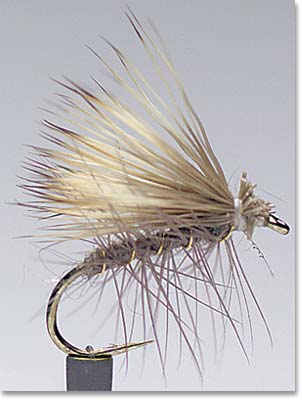 Solid construction and good design are your immediate goals. Construction is learned through understanding the limits and proportions of fly tying. Limits are inflexible and exceeding them will weaken the finished fly.
Solid construction and good design are your immediate goals. Construction is learned through understanding the limits and proportions of fly tying. Limits are inflexible and exceeding them will weaken the finished fly.
There is only a finite segment of hook shank that is flat and level, exceeding that will cause tails to point downward, or hook eyes to be filled with hackle barbules and cement. Later when fishing and the fish have a sudden weakness for Pheasant Tail nymphs, your last one can’t be threaded on the leader…that is a crime.
Proportions are similar to limits, but they are flexible. Fly components are measured by hook gape, or shank length, depending on how your instructor or favorite book taught you. Tail length can be shortened or lengthened without compromising construction, so proportions are guides, not inflexible limits.
On rare occasion the properties of a tying material will make proportion a limit. Duck Quill wings on traditional dry flies are a great example, the material is both fragile and rigid, absorbing head cement like a sponge. Once dry they can easily spin a 7X tippet like a rubber band during false casts, especially if oversized. Beautiful to look at but poorly designed for fishing.
You look at your latest handy work, an Adam’s with no Grizzly hackle and your hackle tip wings are at different heights. What do you do? You put it in your fly box. Trout’s eyes are mounted on the sides of their heads, much of their visual plane is monocular vision (only one eye can see the object), if it’s hungry your wings won’t matter.
Coming Out : Imitation versus Impressionism
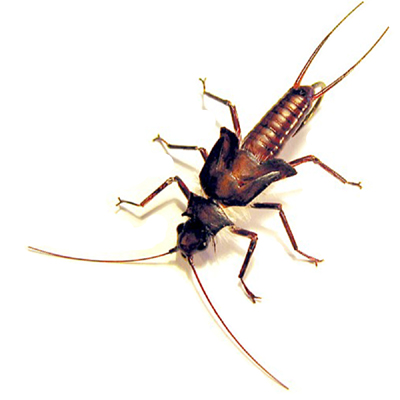 This will be your first significant test as a fly tyer, this is where you will vacillate uncontrollably, dipping your toe first in one, then the other – trying to find who and what you believe in. No author or magazine can help you, this is the test of tyer-as-artist, and likely you will see merit in both camps, but will slowly trend towards one or the other as your craft matures.
This will be your first significant test as a fly tyer, this is where you will vacillate uncontrollably, dipping your toe first in one, then the other – trying to find who and what you believe in. No author or magazine can help you, this is the test of tyer-as-artist, and likely you will see merit in both camps, but will slowly trend towards one or the other as your craft matures.
Imitation is exactly what it implies, you prefer crafting replicas of actual insects, and as a fisherman you believe them to be more effective than generalist patterns. Isn’t this the reason why you wanted to learn to tie flies, so that you could have better more exacting choices?
Real insects are hard and shiny as they wear their “skeleton” on the outside, imitation often leads to the use of synthetic or shiny materials to simulate the real bug. Compensate for the lifeless and hard materials with some that add movement or motion. The photograph is motionless, but the real bug squirms and wriggles, it is a living insect you are duplicating, not the photo.
Flies catch more than fish, flies catch fishermen too. All of us are guilty of the “..if I were a fish I would eat that” logic, which probably hinders us more than helps, as we have no idea what trout think. One thing is true, exacting imitations are pure sex, we want them bad, and the entire angling industry panders to our obsession, with our paycheck the obvious victim.
Impressionism is simulation of an insect, roughly matched to shape, size and color, but with little detail. Impressionistic flies may be general enough to represent all three aquatic food groups with a single pattern, with only the hook size changing. Other flies may acknowledge a damselfly has three paddle shaped gills as a tail with a tuft of marabou, the expression that the damsel has a more substantial tail than a mayfly, but it is not copied beyond that.
This is the fun part, where your experiences are married with the practical and the theoretical, where myth is confirmed and legend can be discarded, it’s the crucible where “your” flies are born.
Which path you prefer is inconsequential, you can fiddle with materials, you have license to alter proportions, you can make flies that resemble nothing, everything, or something – and you’ll be catching fish with all of them.
Fly Tying, the Craft is not the Art
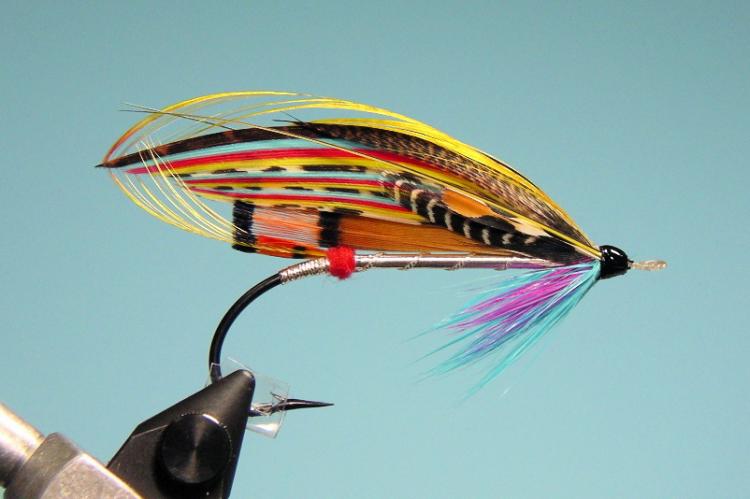 Fly tying craft is disguising a hook by imitating common fish food for use with rod and reel. Fly tying art is the rigor of perfecting these techniques to produce flies worthy of framing, or showcasing the talents of the tier, never to be used in anger.
Fly tying craft is disguising a hook by imitating common fish food for use with rod and reel. Fly tying art is the rigor of perfecting these techniques to produce flies worthy of framing, or showcasing the talents of the tier, never to be used in anger.
At times it’s tough to distinguish between the two, the lines are fluid making it difficult for an apprentice tyer to gauge progress. Much of your angling is reduced to a few trips per year, and the confirmation of your flies effectiveness will not be regular. Magazines and books are constant companions at the tier’s bench, and what you create will be compared to the photographs they contain, it’s important to distinguish art from craft, and to compare apples with apples.
A talented tier can create flies that ignore all proportion, stretch known limits, are extremely difficult to tie, and require exotic materials. It also may take them 3 or more hours to tie that fly, it represents art of the highest form, but can be confused with functional patterns by the unwary.
Putting it all together, the Art of Domestic Bliss
Every rule of fly tying has been broken by flies that are the exception. All limits shattered, all proportion thrown by the wayside, and herein lies sanctuary. The most important rule is do they work, not are they beautiful.
Fish are stupid, have poor vision, and are not vocal, they’ll never sing your praises.
You will have to tie many thousands of flies before proportion and construction are second nature. During all this time, you will evolve many theories, you will read many more, some may hold water and some may not.
Collect real bugs from your favorite streams and imitate them with the materials at hand, forget about what you don’t own, use what you have. Every fly you tie hones your construction skills, even if it never sees action.
A small coffee grinder used with a skein of yellow, red, and blue yarn, can yield every color in the rainbow, chop the segments shorter than an inch, and use the Artist’s Color Wheel to make your fur colors. Fly tying is actually many disciplines, some not related to fishing at all.
Test materials and flies in your bathtub, learn what adds life and motion, and what makes your fly ride upside down. You will find that physics and proportion are tied together, you can take license with proportion knowing what the physical change will be in its aerodynamic or fishing qualities.
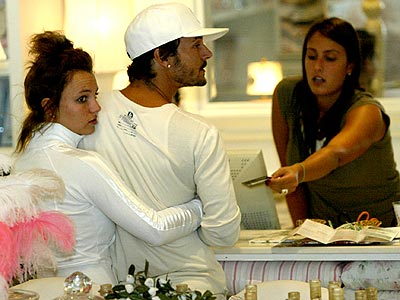 Exploit the materials available to you, leverage your friends. Do you hunt ducks? Does your neighbor? More importantly, does your neighbor notice the bald spot on his Airedale? Be wary, as 20 lbs of fresh killed deer hide will have to be treated immediately, right after you resuscitate your wife…
Exploit the materials available to you, leverage your friends. Do you hunt ducks? Does your neighbor? More importantly, does your neighbor notice the bald spot on his Airedale? Be wary, as 20 lbs of fresh killed deer hide will have to be treated immediately, right after you resuscitate your wife…
Fly tying is a mess maker hobby, filled with odiferous and objectionable items. You will need special storage arrangements to retain domestic bliss. Rotting flesh and moth infestations will be unpopular, seal everything separately to minimize infestation and odor, and use incense cedar rather than mothballs, as moth crystals smell equally bad. Open drawers mean your dog is eating your purple buck tail, or your child is reaching for the porcupine. Be alert that everyone in the household may not share your passion.
You need to address the storage issue almost immediately, and with a permanent furniture purchase. An old vanity table and a chest of drawers will work, both are garage sale fodder, tear the top off the desk and build a new larger work surface. Line both with incense cedar slats from the hardware store. To be allowed into your house, refinish both, as a $25 garage sale purchase can turn into something much better looking if sanded and finished properly.
After all this, you will be confronted by many critics that will find fault with your finest work. Most will have their paws in your fly box to assist you in “lightening” it, but the real critic is the trout, stay focused and please the fish first. Remember you started this bestial trek thinking you would catch more fish, and you are much further along than you think.
Technorati Tags: fly tying, fly tying impressionism, realistic imitation
 What is really needed is a rehab clinic for fly tiers that have entered that hideous tertiary phase…some polite nurse behind the counter to welcome the twitching wreck of a man that brakes for road kill.
What is really needed is a rehab clinic for fly tiers that have entered that hideous tertiary phase…some polite nurse behind the counter to welcome the twitching wreck of a man that brakes for road kill. Birds are easy, the skin is loosely connected to the rest of the critter, and even a dull Buck knife can quickly cape or remove the portions that you want. To complete the task just scrape any fat off the skin, and then stretch the cape feather side down on a piece of cardboard box. The skin will dry and harden within a couple of days. Oil will seep out – the more fat left on the skin, the more oil – but this can be wiped away during the drying process. Cornmeal applied to the skin will absorb all oil, and not be toxic to your dog, after he inhales the cape off your tying bench.
Birds are easy, the skin is loosely connected to the rest of the critter, and even a dull Buck knife can quickly cape or remove the portions that you want. To complete the task just scrape any fat off the skin, and then stretch the cape feather side down on a piece of cardboard box. The skin will dry and harden within a couple of days. Oil will seep out – the more fat left on the skin, the more oil – but this can be wiped away during the drying process. Cornmeal applied to the skin will absorb all oil, and not be toxic to your dog, after he inhales the cape off your tying bench.
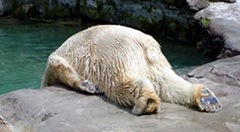 Climate change and vanishing polar ice has
Climate change and vanishing polar ice has  Fly Tying is one of those rare disciplines blending art and science. An endless source of frustration and pleasure, interspersed with fits of genius, artistic tantrum, and drudge.
Fly Tying is one of those rare disciplines blending art and science. An endless source of frustration and pleasure, interspersed with fits of genius, artistic tantrum, and drudge. Solid construction and good design are your immediate goals. Construction is learned through understanding the limits and proportions of fly tying. Limits are inflexible and exceeding them will weaken the finished fly.
Solid construction and good design are your immediate goals. Construction is learned through understanding the limits and proportions of fly tying. Limits are inflexible and exceeding them will weaken the finished fly. This will be your first significant test as a fly tyer, this is where you will vacillate uncontrollably, dipping your toe first in one, then the other – trying to find who and what you believe in. No author or magazine can help you, this is the test of tyer-as-artist, and likely you will see merit in both camps, but will slowly trend towards one or the other as your craft matures.
This will be your first significant test as a fly tyer, this is where you will vacillate uncontrollably, dipping your toe first in one, then the other – trying to find who and what you believe in. No author or magazine can help you, this is the test of tyer-as-artist, and likely you will see merit in both camps, but will slowly trend towards one or the other as your craft matures. Fly tying craft is disguising a hook by imitating common fish food for use with rod and reel. Fly tying art is the rigor of perfecting these techniques to produce flies worthy of framing, or showcasing the talents of the tier, never to be used in anger.
Fly tying craft is disguising a hook by imitating common fish food for use with rod and reel. Fly tying art is the rigor of perfecting these techniques to produce flies worthy of framing, or showcasing the talents of the tier, never to be used in anger. Exploit the materials available to you, leverage your friends. Do you hunt ducks? Does your neighbor? More importantly, does your neighbor notice the bald spot on his Airedale? Be wary, as 20 lbs of fresh killed deer hide will have to be treated immediately, right after you resuscitate your wife…
Exploit the materials available to you, leverage your friends. Do you hunt ducks? Does your neighbor? More importantly, does your neighbor notice the bald spot on his Airedale? Be wary, as 20 lbs of fresh killed deer hide will have to be treated immediately, right after you resuscitate your wife…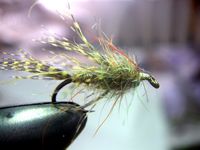 I mentioned the “Bird’s Nest” fly in last nights post, I had the privilege of knowing Calvert Bird years ago when it was created. Cal was one of the most singular and gentle fellows I’ve ever known, he had a weakness for coffee and wreath cake, which I exploited unmercifully.
I mentioned the “Bird’s Nest” fly in last nights post, I had the privilege of knowing Calvert Bird years ago when it was created. Cal was one of the most singular and gentle fellows I’ve ever known, he had a weakness for coffee and wreath cake, which I exploited unmercifully.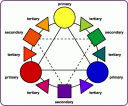
 Computer technical types love jargon that lifts the customers eyebrow. It’s a simple explanation really, Ma cut the crusts off our sandwich in elementary school, we been on the prod ever since.
Computer technical types love jargon that lifts the customers eyebrow. It’s a simple explanation really, Ma cut the crusts off our sandwich in elementary school, we been on the prod ever since.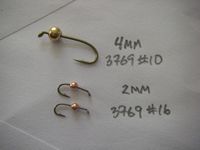 The 2mm bead is the perfect size for #20 and #18 hooks. They will fit over the hook point of larger hooks, #18 and #16.
The 2mm bead is the perfect size for #20 and #18 hooks. They will fit over the hook point of larger hooks, #18 and #16.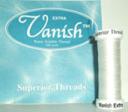 They say “revenge is a dish, best served cold,” and I’ve got the ultimate prank for them mooching fish buddies of yours.
They say “revenge is a dish, best served cold,” and I’ve got the ultimate prank for them mooching fish buddies of yours.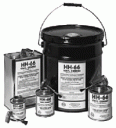 Managed to track down some more bulk tying material sources, figured to pass them on.
Managed to track down some more bulk tying material sources, figured to pass them on. Out of necessity I went “Old School” on all my flies tied this season. My hook stash was light on all the Tiemco, Gamakatsu, Daiichi, round-wire trout hooks, so I dug deeper into the morass to find Mustad 94840 and 3906B’s, the old standards.
Out of necessity I went “Old School” on all my flies tied this season. My hook stash was light on all the Tiemco, Gamakatsu, Daiichi, round-wire trout hooks, so I dug deeper into the morass to find Mustad 94840 and 3906B’s, the old standards.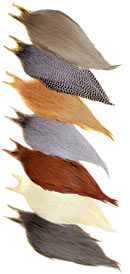 Banish the thought from your mind, tying your own flies is not cheaper than buying them. Measured simply in dollars, the two aren’t even in the same zipcode. There are some benefits to fly tying that can’t be quantified and may tip the scales a bit.
Banish the thought from your mind, tying your own flies is not cheaper than buying them. Measured simply in dollars, the two aren’t even in the same zipcode. There are some benefits to fly tying that can’t be quantified and may tip the scales a bit. If we acknowledge some of the intangibles, that may shift things. What a flytyer gets is a deeper understanding of fly design, movement, and aquatic entomology. He can tailor a fly exactly to the bug he sees on the stream, whereas the guy buying flies has to find an approximation – a standard pattern close enough to the natural that he can use effectively. This is easy, as fish are stupid. On rare occasion, nothing but the custom pattern will do, this is more the exception rather than the rule.
If we acknowledge some of the intangibles, that may shift things. What a flytyer gets is a deeper understanding of fly design, movement, and aquatic entomology. He can tailor a fly exactly to the bug he sees on the stream, whereas the guy buying flies has to find an approximation – a standard pattern close enough to the natural that he can use effectively. This is easy, as fish are stupid. On rare occasion, nothing but the custom pattern will do, this is more the exception rather than the rule. Many fly tyers go off the deep end, and although it can be expensive, it is still a rewarding hobby. These tyers wind up owning huge stashes of fly materials, far in excess of what they can use in multiple seasons. Often these collections result from interests in fly crafting, attempting to tie traditional Atlantic Salmon flies using the original materials, and other esoteric forms of tying. They might live thousands of miles from any salmon, but it is the art and skill displayed that is the main event.
Many fly tyers go off the deep end, and although it can be expensive, it is still a rewarding hobby. These tyers wind up owning huge stashes of fly materials, far in excess of what they can use in multiple seasons. Often these collections result from interests in fly crafting, attempting to tie traditional Atlantic Salmon flies using the original materials, and other esoteric forms of tying. They might live thousands of miles from any salmon, but it is the art and skill displayed that is the main event. In reading the recent developments about
In reading the recent developments about